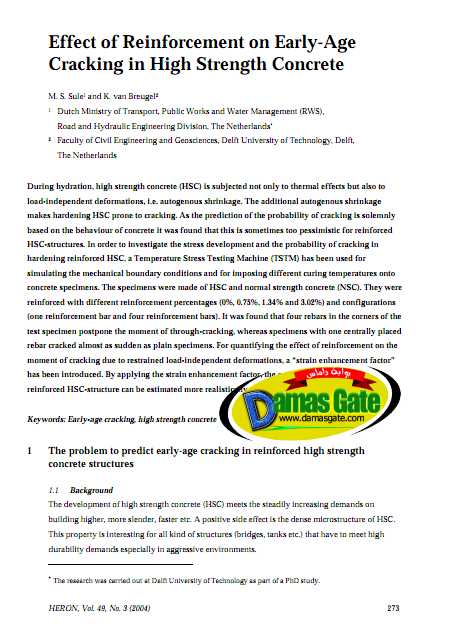Effect of Reinforcement on Early Age

During hydration, high strength concrete (HSC) is subjected not only to thermal effects but also to load-independent deformations, i.e. autogenous shrinkage. The additional autogenous shrinkage makes hardening HSC prone to cracking. As the prediction of the probability of cracking is solemnly based on the behaviour of concrete it was found that this is sometimes too pessimistic for reinforced HSC-structures. In order to investigate the stress development and the probability of cracking in hardening reinforced HSC, a Temperature Stress Testing Machine (TSTM) has been used for simulating the mechanical boundary conditions and for imposing different curing temperatures onto concrete specimens. The specimens were made of HSC and normal strength concrete (NSC). They were reinforced with different reinforcement percentages (0%, 0.75%, 1.34% and 3.02%) and configurations (one reinforcement bar and four reinforcement bars). It was found that four rebars in the corners of the test specimen postpone the moment of through-cracking, whereas specimens with one centrally placed rebar cracked almost as sudden as plain specimens. For quantifying the effect of reinforcement on the moment of cracking due to restrained load-independent deformations, a “strain enhancement factor” has been introduced. By applying the strain enhancement factor, the cracking probability of a reinforced HSC-structure can be estimated more realistically at early-age.
Download
http://s18.alxa.net/s18/srvs2/02/002....Early.Age.rar